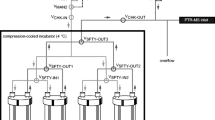Abstract
The study aimed to detect volatile organic compounds (VOCs) during spoilage of chicken breast filets under modified atmosphere packaging (MAP, (70% O2; 30% CO2)). Storage tests were conducted at 6 °C in a household refrigerator. Measurements were made using untreated chicken breast filets and using filets inoculated with either Pseudomonas fluorescens or Escherichia coli bacteria. The gas space above the sample was adsorbed once a day on Tenax® TA and analyzed using thermal desorption-gas chromatography-mass spectrometry (TD-GC/MS). During storage, 60 volatile organic compounds of hydrocarbons, alcohols, aldehydes, ketones, esters, ethers, and sulfur-containing compounds were detected. It was shown that the presence of most hydrocarbons and aldehydes declined during storage time, whereas most of the alcohols, ketones, sulfur-containing compounds, esters, and ethers increased. Some of these detected VOCs could act as indicators to describe the freshness loss of the product. The best spoilage markers for spoiled chicken breast filets under MAP were 2-methyl-1-propanol, 2-methyl-1-butanol, 3-methyl-1-butanol, 3-hydroxy-2-butanone, ethyl acetate, 2-butanone, and sulfur-containing compounds.






Similar content being viewed by others
References
Argyri, A.A. et al., 2015. The dynamics of the HS/SPME-GC/MS as a tool to assess the spoilage of minced beef stored under different packaging and temperature conditions. International Journal of Food Microbiology, 193, pp. 51–58. Available at: doi:10.1016/j.ijfoodmicro.2014.09.020.
Boothe DDH, Arnold JW (2002) Electronic nose analysis of volatile compounds from poultry meat samples, fresh and after refrigerated storage. Journal of the Optical Society of America, A, Optics, image science, and vision 82:315–322
Bruckner S et al (2012) Characterization and comparison of spoilage processes in fresh pork and poultry. J Food Qual 35(5):372–382
Casaburi, A. et al., 2014. Activities of strains of Brochothrix thermosphacta in vitro and in meat. Food Research International, 62, pp. 366–374. Available at: doi:10.1016/j.foodres.2014.03.019.
Ercolini D et al (2009) Mesophilic and psychrotrophic bacteria from meat and their spoilage potential in vitro and in beef. Appl Environ Microbiol 75(7):1990–2001
Ercolini D et al (2011) Monitoring of microbial metabolites and bacterial diversity in beef stored under different packaging conditions. Appl Environ Microbiol 77(20):7372–7381
Herbert U, Kreyenschmidt J (2015) Comparison of oxygen- and nitrogen-enriched atmospheres on the growth of Listeria monocytogenes inoculated on poultry breast fillets. J Food Saf 35(4):533–543
Jay, J., Loessner, M. and Golden, D., 2005a. Food protection with modified atmospheres. In Modern Food Microbiology. pp. 351–370.
Jay, J.M., Loessner, M.J. and Golden, D.A., 2005b. Fresh meats and poultry. Modern Food Microbiology, 7th Edition, pp. 63–99.
Koutsoumanis, K., Taoukis, P.S. and Nychas, G.J.E., 2004. Development of a safety monitoring and assurance system for chilled food products. International Journal of Food M.
Kreyenschmidt J, Ibald R (2012) Modeling shelf life using microbial indicators. Shelf life assessment of food:127–163
Leroy F et al (2009) Volatile analysis of spoiled, artisan-type, modified-atmosphere-packaged cooked ham stored under different temperatures. Food Microbiol 26(1):94–102
Luna G, Aparicio R, García-González DL (2006) A tentative characterization of white dry-cured hams from Teruel (Spain) by SPME-GC. Food Chem 97(4):621–630
Maddula S et al (2009) Detection of volatile metabolites of Escherichia coli by multi capillary column coupled ion mobility spectrometry. Analytical and b 394:791–800
Mikš-Krajnik M, Yoon YJ, Yuk HG (2015) Detection of volatile organic compounds as markers of chicken breast spoilage using HS-SPME-GC/MS-FASST. Food Sci Biotechnol 24(1):361–372
Nychas GJE et al (2008) Meat spoilage during distribution. Meat Sci 78(1–2):77–89
Raab, V. et al., 2008. Generic model for the prediction of remaining shelf life in support of cold chain management in pork and poultry supply chains. 8, pp. 59–74.
Rajamäki T et al (2006) Application of an electronic nose for quality assessment of modified atmosphere packaged poultry meat. Food Control 17(January):5–13
Rossaint, S. and Kreyenschmidt, J., 2014. Intelligent label—a new way to support food waste reduction. Proceedings of the Institution of Civil Engineers, pp. 1–9.
Senter SD, Arnold JW, Chew V (2000) APC values and volatile compounds formed in commercially processed, raw chicken parts during storage at 4 and 13 °C and under simulated temperature abuse conditions †. J Sci Food Agric 80(January):1559–1564
Smolander M et al (2004) Monitoring of the quality of modified atmosphere packaged broiler chicken cuts stored in different temperature conditions. A. Time–temperature indicators as quality-indicating tools. Food Control 15:217–229
Tománková J et al (2012) Volatile organic compounds as biomarkers of the freshness of poultry meat packaged in a modified atmosphere. Czech J Food Sci 30(5):395–403
Xie J et al (2008) Volatile flavor constituents in roasted pork of Mini-pig. Food Chem 109(3):506–514
Yu AN et al (2008) Analysis of volatile compounds in traditional smoke-cured bacon (CSCB) with different fiber coatings using SPME. Food Chem 110(1):233–238
Acknowledgements
This work was supported and financed by the Safety and Security Research Institute of the Hochschule Bonn-Rhein-Sieg University of Applied Sciences.
Author information
Authors and Affiliations
Corresponding author
Ethics declarations
Conflict of Interest
Daniel Klein declares that he has no conflict of interest. Stephan Maurer declares that he has no conflict of interest. Ulrike Herbert declares that she has no conflict of interest. Judith Kreyenschmidt declares that she has no conflict of interest. Peter Kaul declares that he has no conflict of interest.
Ethical Approval
This article does not contain any studies with human participants or animals performed by any of the authors.
Informed Consent
Not applicable.
Rights and permissions
About this article
Cite this article
Klein, D., Maurer, S., Herbert, U. et al. Detection of Volatile Organic Compounds Arising from Chicken Breast Filets Under Modified Atmosphere Packaging Using TD-GC/MS. Food Anal. Methods 11, 88–98 (2018). https://doi.org/10.1007/s12161-017-0978-z
Received:
Accepted:
Published:
Issue Date:
DOI: https://doi.org/10.1007/s12161-017-0978-z




